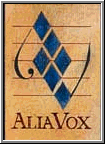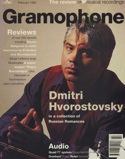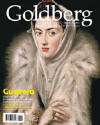 Extraits:
Extraits:
" Le 18 février 1706, la tragédie en musique Alcione fut
représentée pour la première fois à Paris, dans la salle du Palais
Royal. D’emblée, elle reçut du public un accueil chaleureux. Ce
fut le plus grand succès de Marin Marais, l’auteur de la
partition. Le compositeur, âgé de cinquante ans, était parvenu à
l’apogée de sa carrière. Il venait notamment de remplacer à
l’Opéra André Campra pour « battre la mesure », c’est-à-dire
diriger les nombreux interprètes appelés pendant les spectacles à
jouer dans la fosse et à se produire sur la scène" .
"
Alcione, … s’inscrit dans la tradition lullyste. C’est une
tragédie en musique comportant cinq actes et un prologue. Le
sujet (est) tiré des Métamorphoses d’Ovide,… "
" Comme dans les autres tragédies en musique de l’époque,
les pages réservées à l’orchestre occupent dans Alcione une
place importante. Du fait de sa carrière d’instrumentiste,
Marais leur accorda une attention particulière, les portant
à un raffinement jusqu’alors inégalé. On peut le constater à
l’audition des pièces choisies pour cet enregistrement ".
" A
l’instar des suites diffusées dans l’Europe de l’époque, des
danses qui figurent au prologue et à chaque acte dans les
divertissements ont été ici réunies, précédées de la
traditionnelle ouverture à la française. Celle d’Alcione
révèle un caractère pathétique. Dès les premières mesures,
après un saut mélodique impressionnant d’une octave à la
partie supérieure, un accord très dissonant de seconde d’une
grande intensité dramatique se fait entendre dans la
tonalité sombre de ré mineur. Puissance qu’on retrouve dans
le mouvement également grave de la fin, où le rythme devient
haletant, haché d’abord de longs silences, avant que la
basse ne s’accélère jusqu’à l’ultime cadence. Entre des
pages aussi théâtrales, Marais déploie dans la seconde
partie toute sa science de compositeur de musique
instrumentale, conduisant avec panache chacune des cinq voix
écrites dans un style intriqué ".
" Les danses s’inscrivent également dans la tradition
lullyste : gigues, sarabandes, passepieds, menuets. L’un des
intermèdes est prévu pour servir d’entracte, c’est-à-dire
pour être joué pendant le changement à vue d’un décor. Dans
la grande chaconne du dernier acte, Marais ne se montre pas
inférieur à son illustre devancier, créant d’ingénieuses
variations, tant sur le plan rythmique que mélodique. De ces
épisodes écrits à cinq ou à trois parties, il découle tantôt
une belle sérénité, tantôt un débordement pétillant, tantôt
une douce mélancolie, tantôt encore une étonnante poésie.
Dans la marche pour les bergers et les bergères du prologue,
le compositeur enrichit encore les modèles lullystes,
annonçant les chefs-d’œuvre de Jean-Philippe Rameau ".
" Pour flatter le goût de ses contemporains, Marais ne cède
pas seulement à la mode de la bergerie. Il glisse aussi dans
plusieurs de ses danses des airs faciles à retenir, qu’il ne
manque pas de faire chanter aussitôt après une première
exécution par un soliste et le plus souvent par le chœur".
"« Beaucoup plus complexes sont d’autres pages réservées à
l’orchestre, étrangères cette fois au ballet. Les préludes
et la ritournelle chargés de débuter les troisième et
dernier actes sont à cet égard remarquables ".
" Les symphonies descriptives composées pour Alcione offrent
à côté de cette ritournelle un contraste saisissant, tant
elles cherchent à impressionner par leur puissance,
recourant à tous les moyens dont disposait l’orchestre de
l’époque. Celle du sommeil est inspirée de celle d’Atys de
Lully … "
" Après le repos qu’impose le Sommeil survient la célèbre
tempête. Son succès fut tel qu’on rapporta lors de la
création d’Alcione que sans elle, « cet opéra nouveau aurait
» connu « le sort du vaisseau ». Propos certes exagérés,
mais, il faut le reconnaître, Marais ne ménagea pas ses
efforts pour décrire le phénomène naturel ".
Jérôme de la Gorce
Lisez le texte intégral - Site
Alia Vox
+ Description
Référence:
Sylvette Milliot, Jérôme de la Gorce: Marais, Paris, Fayard,
1991
 Excerpts
Excerpts
"On
18 February 1706, the opera (or tragédie en musique), Alcyone was
given its first performance at the Palais Royal in Paris. The
public response was immediately enthusiastic. It was to be Marin
Marais’s greatest triumph. The composer, aged fifty, was at the
height of his career. He had just replaced André Campra as
“conducteur” at the Paris Opera, beating time for the numerous
performers who were called upon to play in the pit or appear on
stage".
"Alcyone
… follows in the tradition of Lully. It is a tragédie en musique
in five acts and a prologue. . The librettist, Antoine Houdar de
la Motte, took his inspiration from Ovid’s Metamorphoses, on which
he relies heavily for his description of several episodes, notably
the moving storm scene in Act Four".
"As
in the other tragedies en musique of the time, the purely
orchestral parts play an important role in Alcyone. Himself
an instrumentalist, Marais paid particular attention to the
instruments, bringing them to a hitherto unequalled
refinement, as can be seen from the pieces chosen for this
recording".
"Following
the example of the suites that circulated in Europe at that
time, the dances from the prologue and those from the
divertissements in each act have been brought together here,
preceded by the traditional ouverture a la française. The
overture to Alcyone contains a certain pathos. From the
first bars, after an impressive melodic leap of an octave in
the upper part, an intensely dramatic and very dissonant
third inversion of the seventh chord is heard in the sombre
key of D minor. This forcefulness is also to be found in the
equally serious final movement, with its panting rhythm,
initially broken by long pauses, before the bass accelerates
towards the final cadence. Between these two theatrical
sections, in the second part Marais demonstrates all his
skill and panache as a composer of instrumental music in his
treatment of each of the five intricately written voices".
"The
dances also follow the Lullian tradition: gigues, sarabandes,
passepieds, minuets. One of the minuets is intended to serve
as an interlude – in other words, played while the sets are
being changed in full view of the audience. In the chaconne
at the end of the last act, Marais shows himself to be by no
means inferior to his illustrious precursor, creating
ingenious variations both in the rhythm and the melody.
These episodes, in five or three parts, are sometimes
wonderfully serene in atmosphere, sometimes gently
melancholy, and sometimes astonishingly poetical".
"In
the march for the shepherds and shepherdesses in the
prologue, the composer further enriches Lully’s models,
heralding the masterpieces of Jean-Philippe Rameau".
"In
order to pander to the tastes of his contemporaries, Marais
not only gives in to the fashion for bergerie (pastoral
subjects), but he also slips catchy tunes into several of
his dances, which are then repeated immediately afterwards
by one of the soloists and usually by the chorus".
"Other
exclusively orchestral pieces, this time unrelated to the
ballet, are much more complex. The prelude and ritornello at
the beginning of the third and final acts, respectively, are
quite remarkable".
"The
descriptive “symphonies” composed for Alcyone are in
striking contrast to this ritornello: they harness all the
means the orchestra of the time had at its disposal in order
to impress by their forcefulness. The Symphonie du Sommeil
(symphony of Sleep) in Act IV is inspired by the one in
Lully’s Atys…"
"After
the restfulness of Sleep comes the famous storm. It was such
a success that it was reported after the first performance
of Alcyone that without it “this new opera would have [met
with] the same fate as the ship”! An exaggeration, of
course, but it must be recognized that Marais spared no
effort in describing this natural phenomenon".
Jérôme de la Gorce
Translation: Mary Pardoe
To read the integral version - AliaVox Website -
-
Alia Vox
+ Description
Reference:
Sylvette Milliot, Jérôme de la Gorce: Marais, Paris, Fayard,
1991








